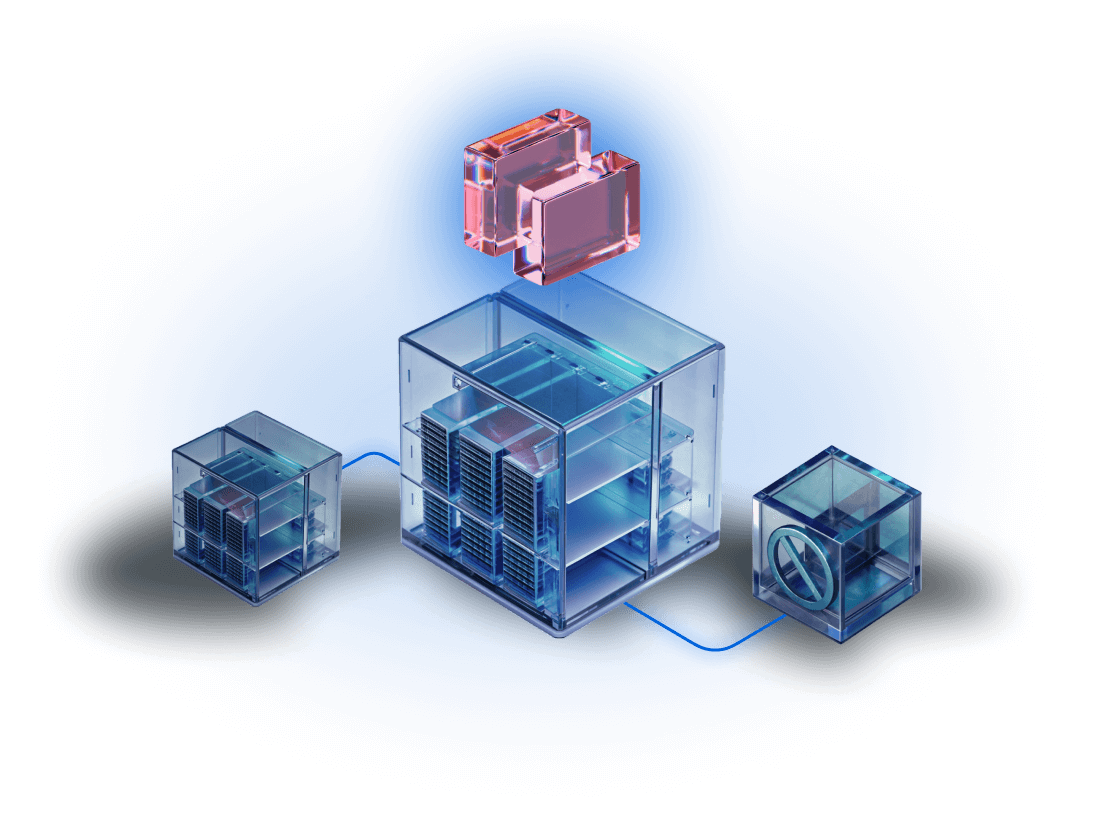High-availability cluster
Automatic switching of virtual machines to operational nodes in case of failures to ensure high availability of infrastructure and business continuity

Key features
Minimum cluster requirements
To ensure cluster fault tolerance, you need at least 3 nodes with Ceph or SAN network storage and KVM virtualization.
Recognizing various emergency situations
The recovery procedure is launched not only in the event of a complete node failure, but also in the event of problems with the availability of the control network or network storage
Prompt response
Recognizing an emergency situation takes less than a minute, restarting virtual machines on worker nodes takes a few seconds
Prioritizing Virtual Machines
In a failover cluster, you can select virtual machines to be automatically restored and specify the priority of their startup on the host node.
How does a high-availability cluster work?
VMmanager supports microservice architecture and building unbreakable clusters. Increasing the load on one service does not affect the operation of the platform itself and other components.
Unbreakable clusters ensure that virtual machines continue to operate even if hardware or software fails. If a failure occurs on one of the cluster nodes, VMmanager automatically migrates virtual machines to other available nodes, minimizing downtime and ensuring a high level of business continuity.
Platform-level resiliency
The recovery procedure for virtual machines is provided by high availability agents. Node disaster recovery is activated even if the VMmanager virtualization management platform fails.
The mechanism for implementing high availability allows you to ensure fault tolerance of the virtualization platform without complex administration. It is enough to move the platform master node to one of the fault-tolerant machines within the unbreakable cluster.
Prompt VM recovery in case of a failure
The control node is responsible for monitoring the availability of cluster nodes. It not only reacts to a complete node failure, but also monitors:
Availability of the control network;
Network storage availability.
To increase the accuracy and speed of response, an additional factor is used – a verification IP address. This allows you to recognize an emergency situation when a cluster node no longer has access to the control network, but it remains accessible to virtual machines.
The platform records an emergency situation within a minute of its occurrence. Migrating virtual machines to a working cluster node and restarting them takes a few seconds. High response speed mitigates risks associated with service unavailability and increases the level of business continuity.
VMmanager Hosting Plan
For companies providing service provider services. Allows serving external clients under the VPS-Hosting model
- Automatic provisioning of VPS from 4 seconds
- Multi-tenant architecture
- KVM virtualization
- Lightweight LXC/LXD containers
- Built-in self-service portal
- Integration with billing systems
- Virtual networks
- Flexible service customization and REST API for custom integrations
- License per physical core €/year
about the platform
Detailed video about the platform's capabilities
a demo
Personal platform demonstration for customer employees. The demo is conducted by implementation team experts
management
platforms
Get demo access to experience ISPsystem solutions in action:
- Try the user-friendly interface designed for users with varying technical skills
- Explore automation, monitoring, and billing capabilities
- See how ISPsystem solves IT management challenges and optimizes costs
VMmanager Hosting Plan
For companies providing service provider services. Allows serving external clients under the VPS-Hosting model
- Automatic provisioning of VPS from 4 seconds
- Multi-tenant architecture
- KVM virtualization
- Lightweight LXC/LXD containers
- Built-in self-service portal
- Integration with billing systems
- Virtual networks
- Flexible service customization and REST API for custom integrations
- License per physical core €/year
about the platform
Detailed video about the platform's capabilities
a demo
Personal platform demonstration for customer employees. The demo is conducted by implementation team experts